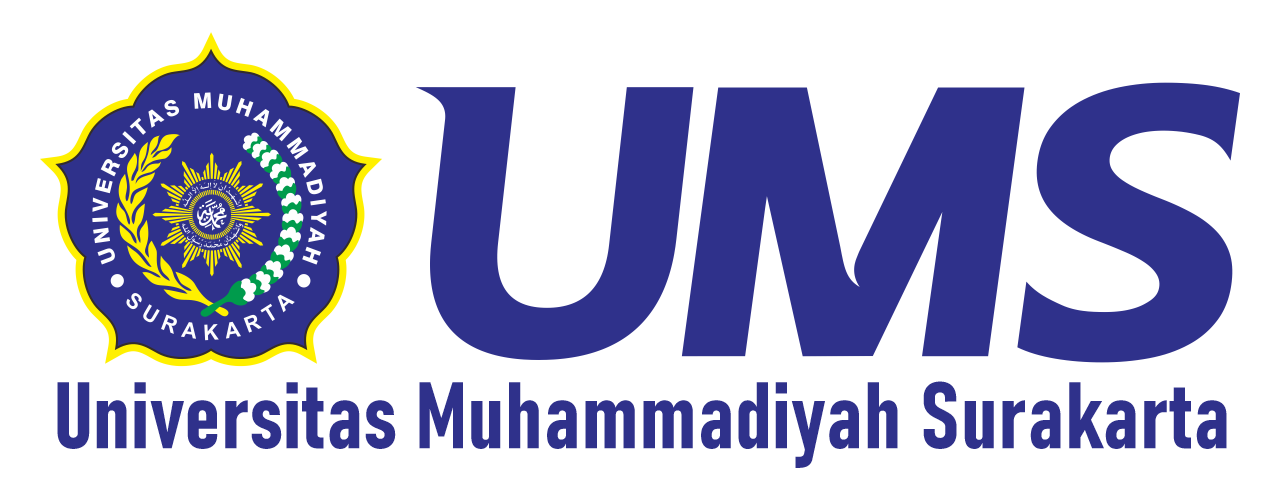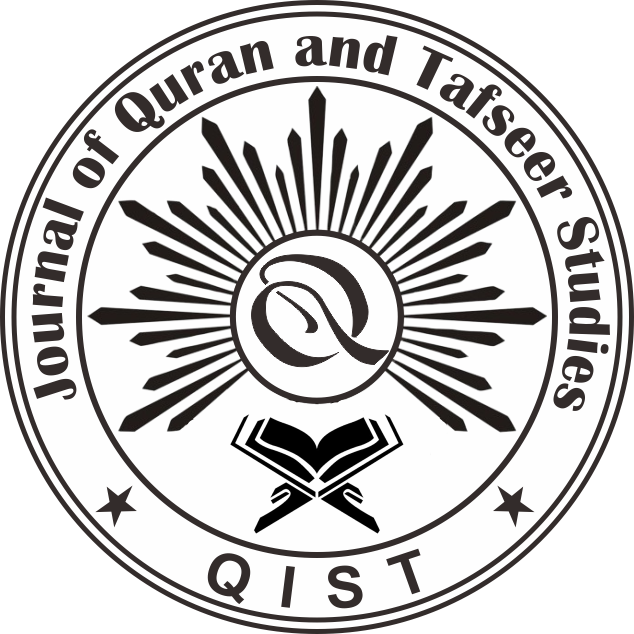Optimizing STEAM-Based Differentiated Instruction to Enhance the Effectiveness of Surah At-Tin Memorization among Fourth-Grade Students at Elementary School
DOI:
https://doi.org/10.23917/qist.v4i1.10209Keywords:
STEAM-based learning, differentiated instruction, Surah At-Tin, elementary education, Quran memorizationAbstract
This study investigated the effectiveness of a differentiated instructional model grounded in STEAM principles, augmented by an interactive PILAR media, on the memorization of Surah At-Tin among fourth-grade elementary students. A true experimental pretest–posttest control-group design was employed, involving an experimental cohort (n=6) and a control cohort (n=9). Both groups completed a baseline assessment of Qur'anic memorization before undergoing four instructional sessions; the experimental group received STEAM-based differentiated activities and digital media support, whereas the control group experienced conventional lecture-based instruction. Posttest results revealed that the experimental group achieved a mean score of 91.67 (SD=8.54), compared to 69.44 (SD=15.32) in the control group. Normalized gain analysis indicated a high gain (g=0.90) for the experimental cohort and a moderate gain (g=0.64) for the control cohort. These findings demonstrated that aligning pedagogical strategies with individual learning preferences, integrating multimodal STEAM tasks, and leveraging interactive technology significantly enhanced both the quantity and accuracy of Qur'anic memorization. The study concluded that a differentiated STEAM-based approach, supported by PILAR media, constituted a superior method for optimizing primary-level Qur'anic memorization and recommended its broader application and longitudinal evaluation.
References
[1] E. Eva'atussalamah, A. Z. Fitri, and C. Choiruddin, "Development of Thematic E-Modules Based on Al-Qur'an Verses To Improve Student Learning Outcomes," Al-Bidayah J. Pendidik. Dasar Islam, vol. 14, no. 2, pp. 279–296, 2022, doi: https://doi.org/10.14421/albidayah.v14i2.793.
[2] M. Yemmardotillah, M. Hafizh, M. Faiz, and H. Hamdi, "Teacher Efforts in Increasing Student Interest in Reading the Quran," Ahlussunnah J. Islam. Educ., vol. 1, no. 3, pp. 130–139, 2022, doi: https://doi.org/10.58485/jie.v1i3.184.
[3] A. Y. Daswara, E. I. I. Purnamanita, M. I. Sanusi, A. Ma'ani, and S. Sholicha, "The Correlation of Dhuha Prayer to the Quality of Students' Qur'an Memory in Bahrusysyifa' Qur'an Elementary School, Sukodono, Lumajang District," J. Soc. Res., vol. 1, no. 12, pp. 788–796, 2022, doi: https://doi.org/10.55324/josr.v1i12.1360.
[4] I. M, "Student Competence in Reading the Al-Qur'an Based on Educational Background," ETDC Indones. J. Res. Educ. Rev., vol. 3, no. 1, pp. 9–18, 2023, doi: https://doi.org/10.51574/ijrer.v3i1.982.
[5] S. Fajeri, Husin, S. Khadijah, and A. R. bin A. Aziz, "Implementation of Religious Values Through Dhuha Prayer and Tahfidz Alqur`an Activities in Children," Int. Conf. Educ. Soc. Sci. Technol., vol. 1, no. 2, pp. 61–69, 2022, doi: https://doi.org/10.55606/icesst.v1i2.180.
[6] E. S. Utaminingsih, T. J. Raharjo, and Ellianawati, "Development of an E-module Based on STEAM on the Topic of Human Blood Circulation," J. Penelit. Pendidik. IPA, vol. 9, no. 7, pp. 5333–5340, 2023, doi: https://doi.org/10.29303/jppipa.v9i7.3719.
[7] E. S. Utaminingsih, M. A. Puspita, A. Ihsandi, B. Y. Intania, and A. Tri, "A Systematic Literature Review: The Role of Character-Based Digital Literacy in 21st Century Learning in Elementary Schools," J. Penelit. Pendidik. IPA, vol. 9, no. 10, pp. 829–840, 2023, doi: https://doi.org/10.29303/jppipa.v9i10.4858.
[8] H. Habiba and I. Iryani, "Validity of guided inquiry-based chemical equilibrium e-module integrated with the Al-Quran for Madrasyah Aliyah," J. Pijar Mipa, vol. 17, no. 6, pp. 723–731, 2022, doi: https://doi.org/10.29303/jpm.v17i6.4215.
[9] Z. Zarkasih, D. Diniya, N. D. Permana, and I. Kirana, "Development of Science E-Modules Based on Socio-scientific Issues Integrated with The Quran Verses to Establish Pancasila Student Profiles," J. Nat. Sci. Integr., vol. 6, no. 1, p. 63, 2023, doi: https://doi.org/10.24014/jnsi.v6i1.21855.
[10] N. L. Handayani, E. Y. Prahara, and R. W. Daryono, "The Effects of Learning Al-Quran Hadits and Tadarus Activities on The Ability to Read The Al-Quran in Madrasah Tsanawiyah Students: Does The Mediation Of Reading Intention Matter?," Al Qalam J. Ilm. Keagamaan dan Kemasyarakatan, vol. 18, no. 5, pp. 3382–3410, 2024.
[11] E. S. Utaminingsih, E. Ellianawati, S. Sumartiningsih, and M. A. Puspita, "STEAM Education," J. Ilm. Profesi Pendidik., vol. 8, no. 3, pp. 1605–1612, 2023.
[12] A. S. Wulandari, N. D. Permana, S. Susilawati, M. I. Syarif, and A. Ilhami, "Development of Science E-Modules for Middle Schools Integrated with Al-Qur'an Verses with Virtual Simulation of Solar System Material," J. Penelit. Pengemb. Pendidik. Fis., vol. 8, no. 2, pp. 305–314, 2022, doi: https://doi.org/10.21009/1.08212.
[13] C. F. Quigley, D. Herro, E. King, and H. Plank, "STEAM Designed and Enacted: Understanding the Process of Design and Implementation of STEAM Curriculum in an Elementary School," J. Sci. Educ. Technol., vol. 29, no. 4, pp. 499–518, 2020, doi: https://doi.org/10.1007/s10956-020-09832-w.
[14] W. Chen, X. Tang, and T. Mou, "Course design and teaching practice in STEAM education at distance via an interactive e-learning platform: A case study," Asian Assoc. Open Univ. J., vol. 14, no. 2, pp. 122–133, 2019, doi: https://doi.org/10.1108/AAOUJ-07-2019-0027.
[15] E. B. Wiranto and S. Suwartini, "Artificial Intelligence and Trustworthy Principles in Global Islamic Education," Ushuluddin Int. Conf. 6 th, pp. 64–78, 2022.
[16] A. Meizar, T. Eliawati, and R. Ramadhani, "Implementasi Pembelajaran Berdiferensiasis Berbasis Profil Pelajar Pancasila dalam Meningkatkan Keterampilan Mengajar Guru Sekolah Menengah Pertama," JCES (Journal Character Educ. Soc., vol. 6, no. 4, pp. 638–649, 2023.
[17] D. Pebriyanti, "Pengaruh Implementasi Pembelajaran Berdiferensiasi pada Pemenuhan Kebutuhan Belajar Peserta Didik Tingkat Sekolah Dasar," J. Kridatama Sains Dan Teknol., vol. 5, no. 01, pp. 89–96, 2023, doi: https://doi.org/10.53863/kst.v5i01.692.
[18] A. Ana, "Implementasi Pembelajaran Berdiferensiasi Terintegrasi Pembelajaran Sosial Dan Emosional Untuk Mewujudkan Profil Pelajar Pancasila," Media Didakt., vol. 8, no. 1, pp. 61–69, 2022, doi: https://doi.org/10.52166/didaktika.v8i1.3686.
[19] Nurasmi, "Meningkatkan Motivasi Belajar Al- Qur ' an Surat At - Tin Siswa Kelas IV SD Negeri 14 Tonang Raya Kecamatan Dua Koto Melalui Model Cooperatif Learning," EduSpirit J. Pendidik. Kolaboratif, vol. 01, no. 03, pp. 79–84, 2024.
[20] Z. Ashri, "Analysis Of Istifham Sentences In Surah At-Tin Verse 8: A Study Of Charles Sanders Peirce's Semiotic," Int. J. Res., vol. 1, no. 2, p. 103, 2023, doi: https://doi.org/10.55062//ijr.2023.v1i2/330/5.
[21] N. S. Abubakar, M. N. R. Maksum, and Waston, Pancasila Student Profile as an Interpretation of Contemporary Islamic Religious Education Values. Atlantis Press SARL, 2024. doi: https://doi.org/10.2991/978-2-38476-102-9_63.
[22] Syarmaiweli, "Meningkatkan Motivasi Belajar Al- Qur ' an Surat At -Tin Siswa Kelas IV Melalui Model Cooperatif Learning," EduSpirit J. Pendidik. Kolaboratif, vol. 01, no. 02, pp. 254–259, 2024.
[23] R. Ramadani, S. D. Negeri, and D. Merangir, "Improving Motivation to Learn the Quran Surah At-Tin at SD Negeri 091601 Dolok Merangir through the Cooperative Learning Model," ETNOPEDAGOGI J. Pendidik. dan Kebud. Vol., vol. 2, no. 1, pp. 60–72, 2025.
[24] A. Muhammad, Z. Ul Qayyum, M. Waqar Mirza, S. Tanveer, A. M. Martinez-Enriquez, and A. Z. Syed, "E-hafiz: Intelligent system to help muslims in recitation and memorization of Quran," Life Sci. J., vol. 9, no. 1, pp. 534–541, 2012.
[25] M. Ihza Pramudya and H. Narendrany Hidayati, "Penerapan Pembelajaran Berdiferensiasi Terhadap Hasil Belajar Siswa Pada Mata Pelajaran Agama Islam Jenjang Sekolah Dasar," Pendidik. Agama Islam, vol. 2, no. 1, pp. 160–172, 2023.
[26] M. S. Arifin, "Application of the Tek-Press Method to Fluently Read the Al-Quran for Students at the Kyai Syarifuddin Islamic Boarding School in Lumajang," J. Islam. Educ. Res., vol. 5, no. 02, pp. 123–136, 2024.
[27] A. R. A. Nalendra, Statistika Seri Dasar dengan SPSS. 2021.
[28] H. Hendryadi, "Validitas Isi: Tahap Awal Pengembangan Kuesioner," J. Ris. Manaj. dan Bisnis Fak. Ekon. UNIAT, vol. 2, no. 2, pp. 169–178, 2017, doi: https://doi.org/10.36226/jrmb.v2i2.47.
[29] A. Wahab, J. Junaedi, and M. Azhar, "Efektivitas Pembelajaran Statistika Pendidikan Menggunakan Uji Peningkatan N-Gain di PGMI," J. Basicedu, vol. 5, no. 2, pp. 1039–1045, 2021, doi: https://doi.org/10.31004/basicedu.v5i2.845.
[30] R. A. Putri, I. Magdalena, A. Fauziah, and F. N. Azizah, "Pengaruh Gaya Belajar terhadap Pembelajaran Siswa Sekolah Dasar," Cerdika J. Ilm. Indones., vol. 1, no. 2, pp. 157–163, 2021, doi: https://doi.org/10.36418/cerdika.v1i2.26.
[31] E. S. Utaminingsih and P. D. Purwati, "Characteristics of Third-Grade Elementary School Students and The Importance of Student Character Identification," Res. Dev. J. Educ., vol. 10, no. 2, pp. 1066–1077, 2024.
[32] J. Jamaludin, S. N. A. S. Alanur S, S. Amus, and H. Hasdin, "Penerapan Nilai Profil Pelajar Pancasila Melalui Kegiatan Kampus Mengajar Di Sekolah Dasar," J. Cakrawala Pendas, vol. 8, no. 3, pp. 698–709, 2022, doi: https://doi.org/10.31949/jcp.v8i3.2553.
[33] E. S. Utaminingsih, "Pengembangan E-Modul Berbasis STEAM Topik Peredaran Darah Manusia untuk Meningkatkan Literasi Sains dan Karakter Pelajar Pancasila," Tesis. Universitas Negeri Semarang, 2023.
[34] Y. Kaniyah, I. Purnamasari, and J. Siswanto, "Pengembangan E-Modul Pembelajaran IPA berbasis Problem Based Learning untuk Meningkatkan Kemampuan Literasi Sains Peserta Didik," J. Kualita Pendidik., vol. 3, no. 2, pp. 101–108, 2022.
[35] E. S. Utaminingsih, Ellianawati, S. Sumartiningsih, F. Wuriningsih, and M. A. Puspita, "Development of science literacy competency evaluation instruments on human circulatory topic," Thabiea J. Nat. Sci. Teach., vol. 7, no. 1, pp. 56–78, 2024.
[36] E. S. Utaminingsih et al., "Enhancing Critical Reasoning Character in Pancasila Students: A STEAM Approach by E-Module PRISMA," J. Penelit. Pendidik. IPA, vol. 10, no. 10, pp. 7296–7305, 2024, doi: https://doi.org/10.29303/jppipa.v10i10.7325.
[37] N. Ramadhanti, "Khasiat Buah Tin (Fiscus carica L.) dalam Perspektif Al-Qur'an dan Sains," Es-SyajarJournal Islam. Sci. Technol. Integr., vol. 1, no. 2, pp. 102–109, 2023, doi: https://doi.org/10.18860/es.v1i2.23342.
[38] E. S. Utaminingsih and E. Ellianawati, "Development of Steam-Based E-Modules on Human Circulatory Topics Containing Critical Reasoning and Independent Characters," Turkish Online J. Distance Educ., vol. 26, no. 1, pp. 48–84, 2025.
[39] C. H. Wu, C. H. Liu, and Y. M. Huang, "The exploration of continuous learning intention in STEAM education through attitude, motivation, and cognitive load," Int. J. STEM Educ., vol. 9, no. 1, pp. 1–22, 2022, doi: https://doi.org/10.1186/s40594-022-00346-y.
[40] R. Rahmawati and A. R. Ghazali, "Old-fashioned Policy for Pupils of the Intelligence Era: Why Religious Institutes Preserve Traditional Rules in Digital Society," in E3S Web of Conferences, M. D., A. M., C. D., S. J., S. M., R. A., S. P., and N. A., Eds., EDP Sciences, 2023. doi: https://doi.org/10.1051/e3sconf/202344004006.
[41] Y. Hanafi, H. J. Hendrawan, and I. N. Hakim, "Accelerating Qurán reading fluency through learning using QURáNI application for students with hearing impairments," Int. J. Emerg. Technol. Learn., vol. 14, no. 6, pp. 110–132, 2019, doi: https://doi.org/10.3991/ijet.v14i06.9863.
Submitted
Accepted
Published
How to Cite
Issue
Section
License
Copyright (c) 2025 Rina Murtyaningsih, Esty Setyo Utaminingsih, Mohamad Munawar, Mohammad Nurul Qomar, Muhammad K. Ridwan

This work is licensed under a Creative Commons Attribution 4.0 International License.
















